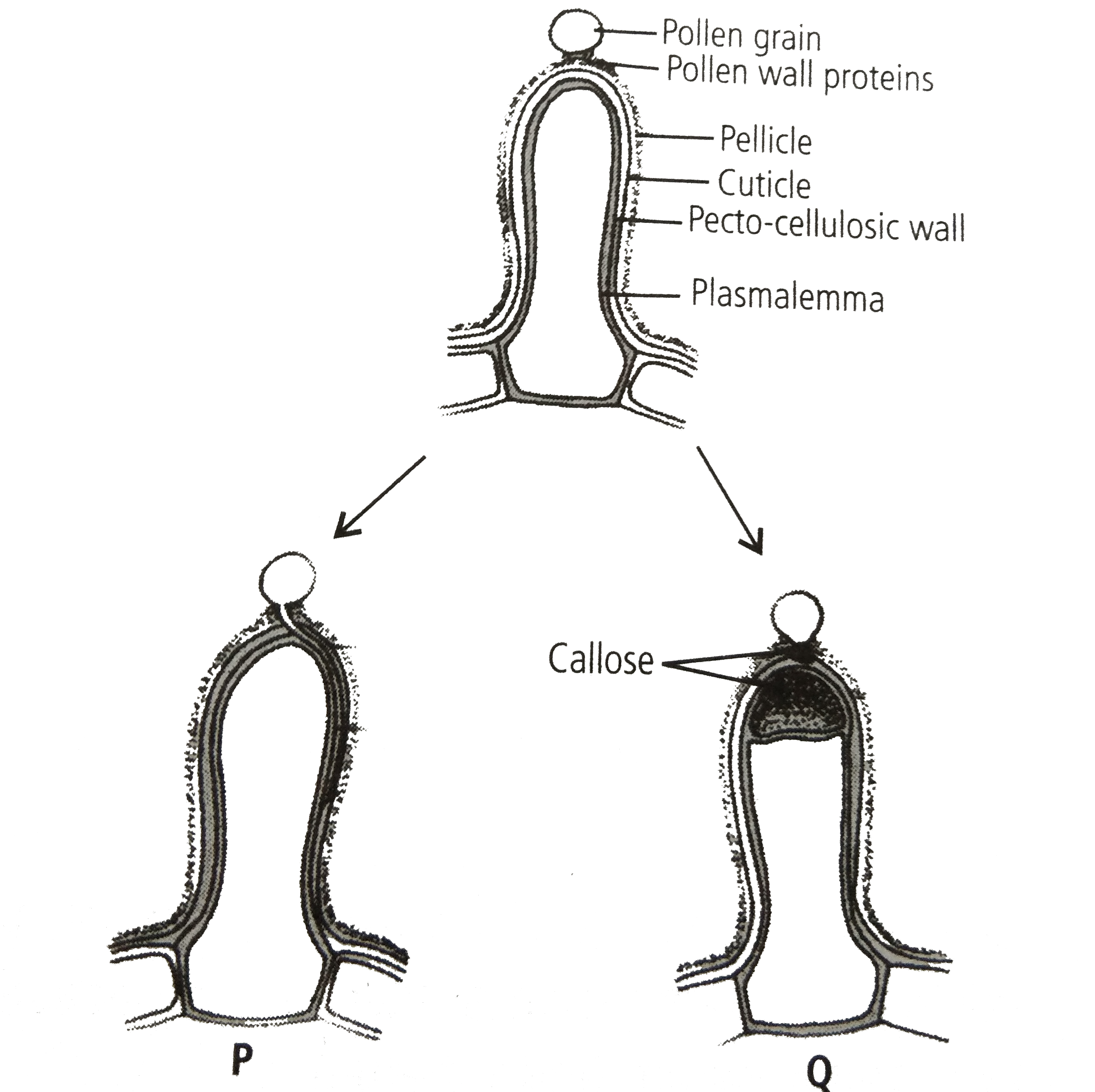During pollen pistil interaction chemical components are released from
Only pollen
only pistil
Both pollen and pistil
The ovary
The correct Answer is:3
Step-by-Step Solution:
1. Understanding Pollen-Pistil Interaction:
- Pollen-pistil interaction is a crucial process in the fertilization of flowering plants. It occurs when pollen grains land on the stigma of a pistil, which is the female reproductive part of the flower.
2. Role of Stigma:
- The stigma is the top part of the pistil that receives pollen grains. It plays a vital role in recognizing compatible pollen for successful fertilization.
3. Chemical Components Released:
- During this interaction, both the pollen grains and the stigma release specific chemical components. These chemicals facilitate communication between the two, allowing the stigma to determine if the pollen is from the same species.
4. Recognition of Compatible Pollen:
- If the pollen is from the same species as the stigma, the chemical signals promote pollen germination and the growth of the pollen tube. Conversely, if the pollen is from a different species, the stigma recognizes this and prevents the pollen tube from growing.
5. Conclusion:
- Therefore, during pollen-pistil interaction, chemical components are released from both the pollen grains and the pistil.
Final Answer:
Chemical components are released from both pollen and pistil during pollen-pistil interaction.
---
- Pollen-pistil interaction is a crucial process in the fertilization of flowering plants. It occurs when pollen grains land on the stigma of a pistil, which is the female reproductive part of the flower.
- The stigma is the top part of the pistil that receives pollen grains. It plays a vital role in recognizing compatible pollen for successful fertilization.
- During this interaction, both the pollen grains and the stigma release specific chemical components. These chemicals facilitate communication between the two, allowing the stigma to determine if the pollen is from the same species.
- If the pollen is from the same species as the stigma, the chemical signals promote pollen germination and the growth of the pollen tube. Conversely, if the pollen is from a different species, the stigma recognizes this and prevents the pollen tube from growing.
- Therefore, during pollen-pistil interaction, chemical components are released from both the pollen grains and the pistil.
Chemical components are released from both pollen and pistil during pollen-pistil interaction.
Similar Questions
Explain pollen-pistil interaction in detail.
View SolutionGiven figures show the pollen-stigma interaction, where pollen wall proteins are released onto the pellicle of stigmatic papillae, where recongnition reaction occurs.

Which of the following statements drawn from given figures is incorrect ?
View Solution
Knowledge Check
In Pollen-pistil Interaction
APistil accepts compatible pollen and promotes post-Pollination eventsBPistil rejects the incompatible pollen by preventing pollen germination on the stigmaCPistil rejects the incompatible pollen by preventing pollen tube growth in the styleDAll of the abovePollen grains are released from
AMacrosporangiumBMicrosporangiumCMegaspore mother cellDArchegoniumThe events in pollen- pistil interaction includes all, except
APollen deposition on the stigma until pollen tubes reach the ovary.BRelease of pollen from one flower to the formation of pollen tubes.CPollen deposition on the stigma until the formation of pollen tubes.DPollen deposition on the stigma intil pollen tubes the ovule
Pollen Pistil Interaction|Double Fertilization
View Solutionthe essential chemical components of many enzymes are
View SolutionThe acceptance and rejection by continous dialogue between pollen grains and pistil mediated by chemical components of pollen and pistil result in
View SolutionThe knowledge of pollen- pistil interaction helps the plant breeder in
View SolutionThe essential chemical components of many coenzymes are
View Solution